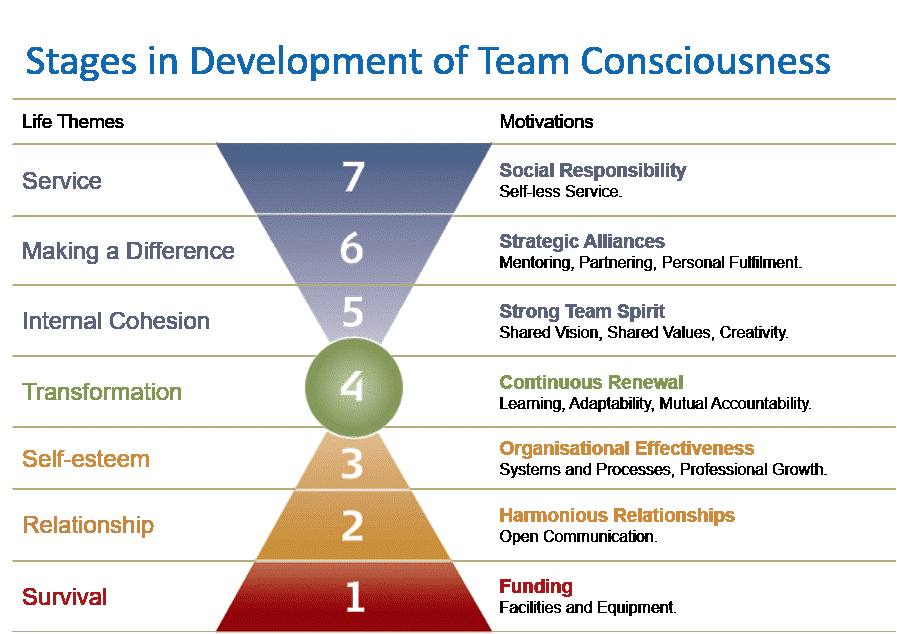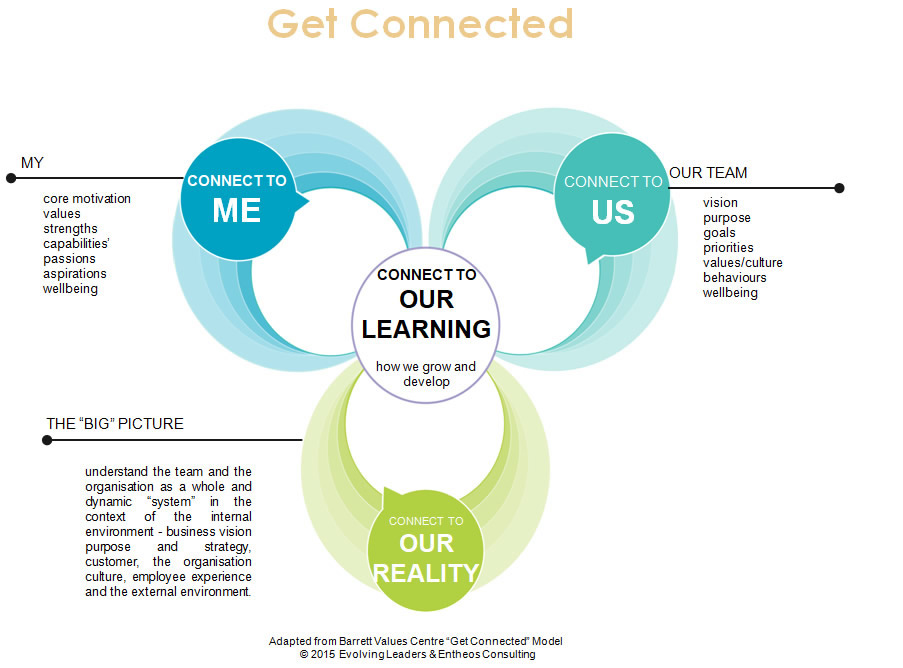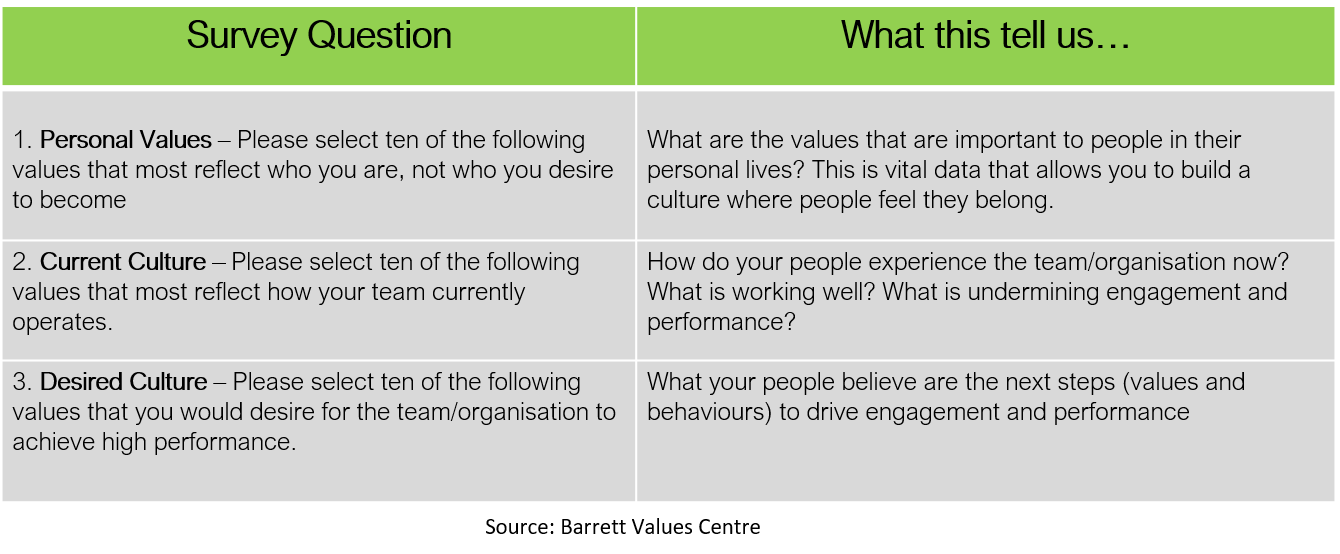Through the lens of a client case study, this post explores why we must look beneath the presenting problem in any team or organisational challenge to surface the invisible aspects of the system that are driving what we see on the surface. This is the key to unlocking previously unavailable energy in the system to drive performance and engagement and grow a healthy team culture.
I recently had a call from a small business owner in the healthcare sector whose enterprise was expanding at quite a rapid pace. He told me that one of his managers was not communicating effectively with the team and that this was causing lots of unrest and dissatisfaction.
We explored various approaches to the situation, including individual coaching for the manager in question. However there had been no previous investment in employee development in the company. I was concerned about the possibility of broader ‘invisible’ issues that might have been contributing to what was going on.
I suggested that rather than focusing on this one manager, this was a great opportunity to do an engagement survey and culture and values assessment across the business. This would help identify any such invisible components of what was playing out in the organisation’s culture. It would also take the whole team on a collaborative learning journey which would help them over the next phase of growth.
The Team Culture Assessment
The assessment we carried out used the Barrett Values Centre Team Culture Assessment along with a simple engagement survey (underpinned by our version of the Get Connected Model as a broader framework).
After these assessments, we work-shopped the results as a group. The data provided the basis for the team to come together, to learn about each other and to engage in dialogue that surfaced how people were feeling and what they were experiencing. This allowed discussion about what was working well and what was getting in the way of performance and engagement. It enabled the group to collectively discover what needed to change and how to go about that.
A significant issue raised by the data was a level of cultural entropy of 25%. Cultural entropy indicates the amount of dysfunction in the organisation system, and this level reflected significant issues requiring immediate attention.
The top collective personal values of the group included caring, honesty, fairness, respect and humour/fun. Personal values tell us what is important to people in their personal lives. This is vital data that allows you to build a culture in which people feel they belong. This group loved learning about what mattered to each other, while the opportunity to share new things about themselves built stronger connection between them all.
Another aspect of culture measured in our assessment are the current culture values. These provide a picture of how people are experiencing the team or organisation at the moment. They show us what is working well and what is undermining engagement and performance. The strengths of the current culture for this group were humour/fun and teamwork, competence, cost effectiveness and efficiency. The limiting values were blame, control and hierarchy.
Unsurprisingly, given the personal values of this group, their desired culture included fairness and honesty along with maintaining the humour/fun that already played an important role in the workplace. Values of ‘blame-free’, compassion and teamwork were also important.
Surfacing the invisible to solve the visible
All these discussions allowed us to surface the invisible forces that were contributing to the original problem: the manager who it was felt was not communicating effectively. Without directly blaming or judging any one person, we were able to engage in dialogue and facilitate personal learning towards the desired culture. Subsequent leadership coaching supported the senior leaders to deepen their personal insights into how they were contributing to the current culture and how they could make changes to their own behaviour towards that desired culture.
During this process one of the key people in the business resigned. Change happens when we engage in dialogue and set a new level of expectations, but unfortunately for some this journey is uncomfortable and they make a personal choice to leave. In my experience, when that happens it is often the best outcome for both the individual and the team.
The immediate changes that resulted from our work with this group (over a three-month period) included:
- regular team meetings were established in which people could all receive the same message
- the ISO accreditation process, which had been dependant on a key individual, was re-scoped into a team project, including participants who were front line employees
- front line employees were given new responsibilities as part of their development
- regular performance conversations were established.
Comments from some of the participants included:
‘I feel relieved that [the tensions] are out in the open and that we can now talk about the issues.’
‘I feel a closeness, a coming together, through talking and taking time with one another. It feels more like a team.’
‘I feel happy that we are getting somewhere and that it feels like a good direction.’
Culture transformation is a dynamic journey. The commitment by the leader in this case to invest in this work was a powerful step towards improving the workplace culture, as was working towards a values-based organisation. A values-based organisation builds trust, while values-based decision making is the best approach to navigating complexity and dealing with uncertainty. It makes us focus on our human needs.
Do you understand the invisible factors that driving performance, engagement and wellbeing in your team or organisation?
For more information on our culture and values assessments, visit this page or contact us?
In my last post I introduced the concept that the mind is much more than just the brain, with recent research indicating real neural connections between the brain, heart and gut. I also talked about the long recognised notion that most of us only use a very small proportion of our consciousness. There are implications – and opportunity – in this for leaders in a highly complex world.
This time I want to explore a few ways of accessing the ‘other 90%’ of our minds.
Fundamentally what we are talking about here is deepening our connection with our inner experience: the ‘below the waterline’, internal individual component of the Integral Model that underpins our work.
However, if this all sounds a bit mystical, it needn’t. The reality is that there are some straightforward ways we can bring more of our subconscious and unconscious treasures to the surface:
Connection with our personal values
When we realise that something feels uncomfortable to us, our body will tell us that it is out of alignment with what our personal values. We literally have a physical response. It might be tightness in the chest, our voice getting higher as we speak, or even saying words that are incongruent with what is important to us. We might feel sick in the gut. Tune into these bodily responses and what is causing them. You can check in on your personal values here.
Connection with feeling and sensation
A good way to start this is to consciously connect with your breath. Try this 6 minute counted breath experience that I recorded to help you to begin to notice what’s happening in your body. During this experience, I invite you to float the following questions, ‘What’s alive in me?’. What thoughts? What feelings? What sensations? This will increase your capacity to observe your self. You may like to take a moment at the end to write down in paper what you noticed.
Quieten the mental chatter
It is estimated that something like 80 per cent of our daily thoughts do not serve us. They are just like the ‘white noise’ on an out-of-tune radio. These thoughts get in the way of us making good decisions and choices and instead feed reactive behaviour. Learning techniques such as mindfulness or Yoga Nidra meditation helps to quieten the mind. They give us a break from our stress-producing thoughts and create the space and stillness for us to connect with our body sensations. And they allow us to hear our inner voice, our ‘wise knowing self’ beyond the mind.
New experiences that temporarily bypass the left side of the brain
I mentioned last time that most of us tend to think predominantly with the left, logical, side of the brain. We can access the right side of the brain – the creative, intuitive side – through experiences that encourage this. One example of this is the experience of art therapy. Such experiences work well provided we are prepared to be open to the experience and trust the process.
Physical practices that bring us into our body
Walking, being in nature, yoga, riding, swimming. In fact any physical experience in which we can be fully present, taking quiet time during or afterwards to connect with the sensations in our bodies. (If you have experienced yoga, you may be familiar with the meditation or shavasana at the end of a yoga practice that encourages this post-activity connection.) Sensation is the only way that our bodies have to communicate with us. Unfortunately, many of us walk around in life either numbing sensation with the use of alcohol, other drugs or pain killers, or not listening to it. When we make a conscious choice to begin to listen to what our bodies are telling us, more of our inner resources become available to us.
Time in nature
Related to the notion of physical practices is the idea of simply building into your day, your week or even your month time to ‘be’ in nature. No phone, no one else. Just you and your breath and your step. (I expand on this idea in this previous post.)
Major life experiences
This is not as straightforward as my other suggestions but it is something to be aware of. Sometimes to open to something beyond the mind – to begin the journey to ‘wake up’ – takes a major life event. It might be the death of a loved one, a serious illness, an accident or other tragedy. The significance of such events makes us feel the experience deeply, and the feeling of the experience allows something deep and previously hidden to reveal itself. Our hearts open up and find available to us inner resources not previously available to us.
With the exception of the last, which is really beyond our control, the other six approaches above should be readily accessible to anyone – even the busy leader.
The key here is for you – the individual leader – to recognise that something needs to change and deliberately and intentionally making the choice to integrate one or more of these suggestions into your daily or weekly rhythm.
From an organisational perspective, incorporating feeling and being practices into shared learning experiences for teams – for example sponsoring employees to participate in Mindful in May or taking your team offsite for a day to participate in an Urban Retreat for Teams, can be wonderful catalysts to create a shared ‘feeling and being’ language and experience that can then, with the energy and desire of the group, take on a life of its own in the workplace.
These posts explore the lens of building ‘connection’ as a model to guide cultural transformation for teams and organisations.
In Part 1 of this series, I explored the first cornerstone of connection, ‘Connect to Me’. In this post we will look at the second cornerstone, ‘Connect to Us’.
Where ‘Connect to Me’ was all about personal leadership and having the confidence to bring ‘more of who you really are to work’, ‘Connect to Us’ is about the group. It follows that the more each of us is willing to reveal our ‘warts and all’ self at work, (and there is the leadership and team culture that provides the best conditions for this to happen), then the better we will all understand each other. This connection brings healthier ways of working straight back to the workplace. This in turn creates the right conditions for the pursuit of a truly human organisation.
As I mentioned last time, in much of my work in recent years I have used the model presented here – which is adapted from the Barrett Values Centre ‘Get Connected’ model – as a road map to simplify some of the complexity and the multi-faceted considerations that exist when navigating cultural change.

One of the diagnostic models I like to use when working with teams is the Barrett Small Group Culture and Values Assessment.
It asks three simple questions of each member of the team and elicits rich data about what is important to each member of the group personally, how they currently experience the team culture and where they would like that culture to be.

The assessment provides the basis for a different conversation – one where real connection happens and healthy change becomes possible. This provides the context for the broader team exploration which includes the following themes:
- ‘Why do we exist?’ or ‘What is our purpose?’
- How is our team culture contributing to the customer experience and the culture of the wider organisation?
- Given what I now know about myself and others, what does that mean in the context of how we operate as a team and the culture we want to create?
- What matters to us collectively as a group and how can we create a culture where we feel greater alignment?
- What is it about the way we operate that is hindering or helping the personal wellbeing of each of us?
- How are we fulfilling our role to deliver on the business strategy?
- Given what we now know, what are our goals and priorities?
The process enables the group to make choices about ‘the way we want to work together’ and ‘the way we want to be together’ and to take committed action to make that happen. This exercise often reveals ‘blockages’ that are preventing the team/organisation from being their best and identifies the key leverage points to harness the energy and build a healthy culture and thriving team.
The way the learning journey is facilitated and the skills that are practised during the team learning journey build connection, which in turn moves the organisation towards being more human. Where meaningful conversation and deep listening occurs, change happens.
“There is no power for change greater than a community discussing what it cares about” (Margaret Wheatley – Turning to One Another)
In Part 3 I explore Connect to Our Reality and Connect to our Learning.
In this series of blogs posts of I have been exploring the different aspects of ‘connection’ that exist at the heart of a human organisation. In Part 1 I looked at the individual perspective, ‘Connect to Me’ and in Part 2 at the team- or organisation-level perspective, ‘Connect to Us’.
These derive from the model presented here, which is adapted from the Barrett Values Centre ‘Get Connected’ model and which I use in my work as a road map to simplify some of the complexity and multi-faceted considerations that exist when navigating cultural change.

In this post we will explore the third cornerstone, ‘Connect to Our Reality’ and the one that brings it all together, ‘Connect to our Learning’
Connect to Our Reality
In this cornerstone of the ‘Get connected’ model, our focus is on understanding the team, the organisation and the wider environment as a whole and dynamic ‘system’ in the context of:
- Business vision and purpose
- Business strategy
- Business performance
- The customer experiences
- Internal environment (organisation culture and employee experience) and
- External environment (competitors, political, economic, social, legislative etc).
Thinking systemically and holistically and understanding dependencies and the broader context of the overall system is vital to creating a healthy, high-performing team culture.
Building connections means understanding, paradoxically, that everything is already connected. Recognising the interconnectedness of different systems – for instance a team in the context of a business unit, a business unit in the context of an organisation, an organisation in the context of a parent organisation and the external landscape – makes sure that the context for transforming the team culture is aligned.
I once worked with some individual faculties which each formed part of a large educational institution. The team within each faculty had its own subculture, as did every other team. And then there was an overall culture that existed across the organisation. This is quite normal, of course. You’ll see a form of it in every large organisation. The challenge when working with just one faculty is that while you can work on changing the ‘local’ culture, you can’t change the culture at an organisational level. But you can’t ignore that broader context either.
By understanding and accepting the ‘connection to our reality’ we are better able to identify the boundaries in which we operate, which strengthens the team focus and resolve towards their desired culture as an expression of that group of people.
Connect to Our Learning
“If you want a harvest in a year, grow a crop…
If you want a harvest in ten years, grow a tree…
If you want a harvest that will last for a life time, grow people.” -Chinese Proverb
‘Connect to Our Learning’ sits front and centre in our Get Connected model for building team culture and that is rightly where it belongs. Culture transformation doesn’t happen without engaging every single employee on a learning journey to develop self-awareness and the practical skills and behaviours they need to increase their self-mastery, to learn to manage their behavioural triggers, to see different perspectives and to enact self-leadership.
In a healthy team culture, ‘everyone is a leader’. Leadership is a mindset and a behaviour that applies to everyone, not just the anointed few. People are responsible for playing a role in driving their own learning and development and the organisation is responsible for providing the learning opportunities that create engaged employees and healthy, high performing culture.
Our Get Connected approach to building team culture is a learning process designed to ignite new awareness about ‘who we are’ and ‘how we show up’ and to bring to the surface the visible and invisible factors driving engagement and performance. This process is deeply transformational as we delve into what is occurring below the surface and uncover the assumptions that are held about the impact of the different dynamics across the eco-system and on individual and organisational performance and well-being.





